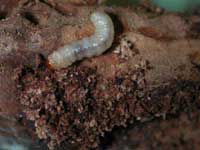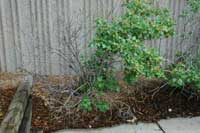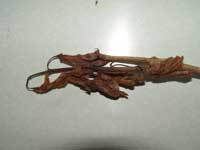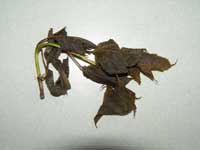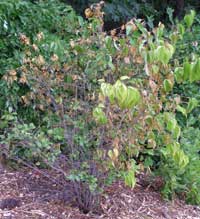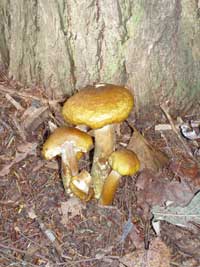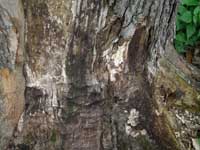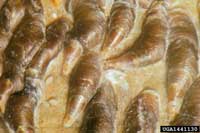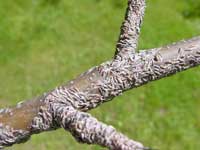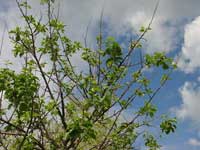Extension > Garden > Diagnose a problem > What's wrong with my plant? > Deciduous > Viburnum > Dead or dying branches
Viburnum > Stems/branches > Dead or dying branches
1 of 5
Viburnum clearwing borer
Synanthedon viburni
- Plants may be wilted
- Stems may dieback or have sparse foliage with a few leaves at tip
- Lower part of stems are gnarled and scarred with sawdust
- Pupal cases may be found sticking out of holes in bark in spring
- Entire bush may die
- Adult borers have ½ inch bluish black bodies with yellow markings and a ¾ inch wingspan – wings are clear
- More information on Viburnum clearwing borer
2 of 5
Botryosphaeria canker
Botryosphaeria dothidea
- Leaves on one or more branches wilt, die and turn brown
- Cankers are sunken, dark colored areas on branches
- Fungal fruiting bodies give canker area a rough or pimpled appearance
- Infected young shoots turn dark brown and curl over in a shepherd's crook
- More information on Botryosphaeria canker
3 of 5
Verticillium wilt
Verticillium dahliae
- Leaves on one to several branches turn red to yellow, wilt, die and fall off
- Depending on the stage of infection, dark streaks are often visible in sapwood if the bark is peeled back
- Symptoms may develop over a single growing season or over several years
- More information on Verticillium wilt
4 of 5
Armillaria Root Rot
Armillaria spp.
- Leaves may be small, pale green to yellow with dark green veins
- When severe, leaf edges turn brown leaves wilt and the branch dies
- No symptoms on branches
- Flat white sheets of fungal mycelia can be seen under the bark on roots or at the base of the plant
- Clusters of honey-colored mushrooms may grow at the base of the shrub in the fall
- More information on Armillaria root rot
5 of 5
Oystershell scale
Lepidosaphes ulmi
- Light infestations do not exhibit obvious symptoms
- Severe infestations can cause chlorotic, stunted foliage
- Dieback and cracked bark can result from heavy infestations
- Light to dark brown, elongated, 1/10 to 1/8 inch long oyster-shell shaped scales found on bark.
- More information on Oystershell Scale




